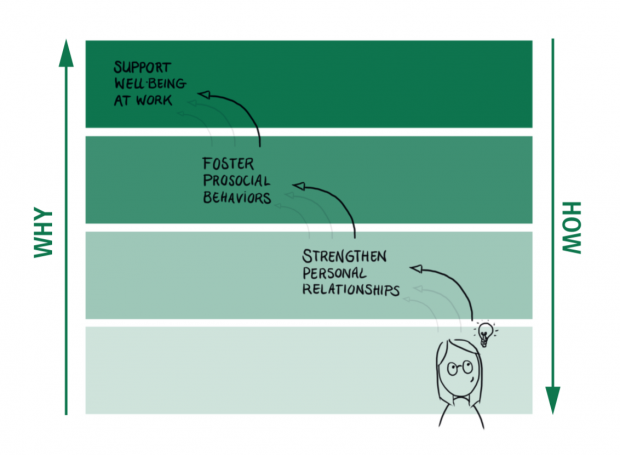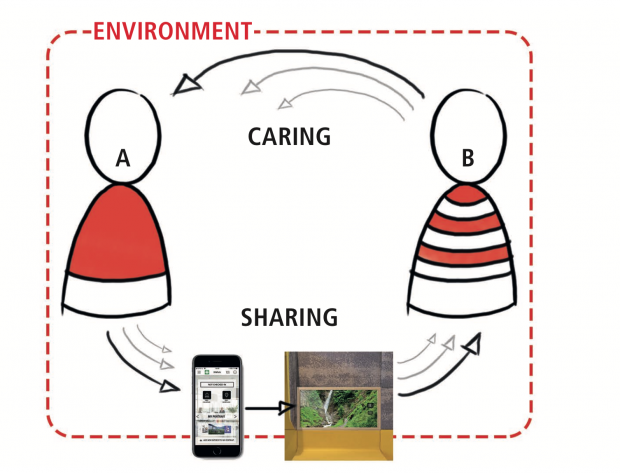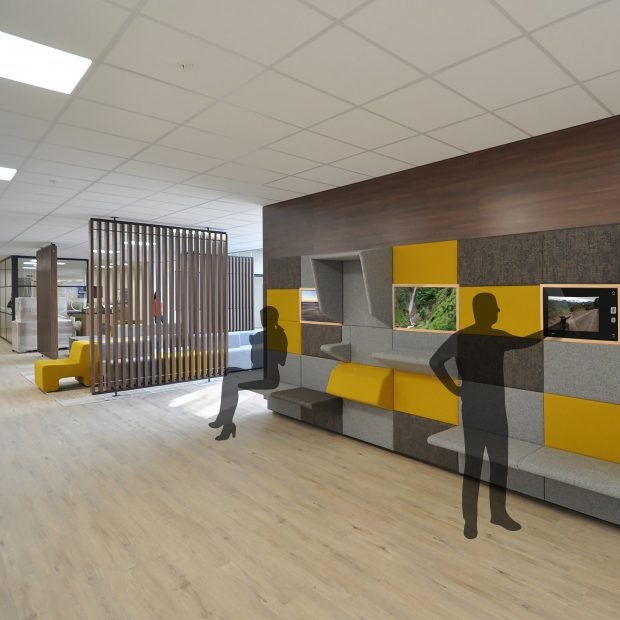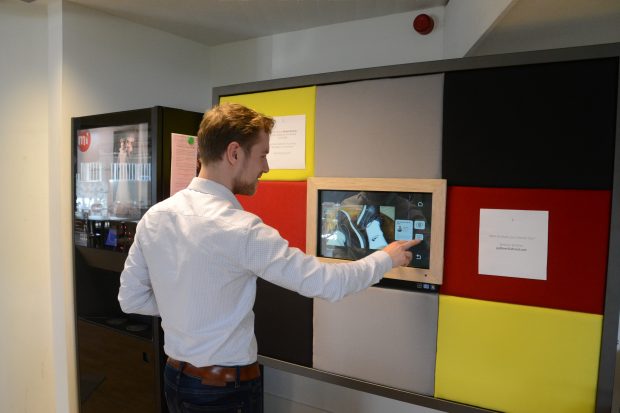By Paula van den Boer
Overview
Work-life-balance is becoming increasingly important in today’s job market. Young professionals actively search for jobs that promote their well-being. The concept of well-being encompasses not just physical health. Psychological health, such as social connectedness and engagement, is just as important. The importance of social connectedness in daily activities is not only receiving recognition from disciplines related to business. For instance in healthcare strong correlations were found between psychological health and overall health and life expectation. Murthy (2017) stated in his article on the loneliness epidemic that loneliness and weak social connections are associated with a reduction in lifespan similar to smoking 15 cigarettes a day and even greater than that associated with obesity. We have not focused nearly as much effort on strengthening connections between people as we have on curbing tobacco use or obesity. This shows a great relevance for companies like Ahrend to invest in a holistic understanding of well-being in the context of work. Katz (1964) stated in his research that specifically extra-role actions intended to benefit people other than oneself, extra-role prosocial behaviors, are essential for successfully functioning organizations and well-being among employees. This project focuses on how office environments can foster these extra-role prosocial behaviors.
Approach
Three themes were studied to explore this design opportunity. Firstly, a literature study, brain writing sessions and a focus group on ‘prosocial behavior at work’ were executed to define various ways of- and incentives for these behaviors (figure 1). 
Figure 1. Collection of 171 examples of prosocial behavior in office environments.
These studies have shown that, in order for extra-role prosocial behavior to occur more frequently, the most substantiated strategy is to invest in the improvement of collegial relationships across disciplines (figure 2 &3).

Figure 2. Opportunity definition.

Figure 3. The factors influencing likelihood of prosocial behaviors and the most substantiated strategy.
This leads to the second theme ‘interdisciplinary bonding at work’. Interdisciplinary bonding encounters challenges due to differences in interests and practices. These differences are rooted within the organization’s culture. Literature- and generative studies on cultural differences in organizations have shown that a common ritual can function as a way to enhance interdisciplinary bonding (figure 4).

Figure 4. Bridging disciplines via a common ritual within organizational culture.
The aim of fostering prosocial behavior in office environments requires a sustainable change in routines and behaviors. Research on the third theme ‘behavior change at work’ has shown that for certain target behavior to happen, a person must have sufficient motivation, sufficient ability, and an effective trigger. Furthermore, the involvement of employees, for instance by allowing environmental personalization, can have a positive effect on positive attitudes towards change. As a result, the most viable design strategy is ‘finding common ground on personal interests through environmental personalization’.
Result
The development of genuine interests in one another is most important for sustainable change towards prosocial behavior. The intended effect of the design is to motivate knowledge workers to develop genuine interest in interdisciplinary colleagues (figure 5). The Ahrend Portrait allows employees to visually portray their interest on the walls of their organization to personalize their work environment (sharing). Furthermore, it allows other employees to develop interest in the portrayed interests on the wall by interacting with them (caring).
 Figure 5. The desired interaction between interdisciplinary colleagues facilitated by the Ahrend Portrait.
Figure 5. The desired interaction between interdisciplinary colleagues facilitated by the Ahrend Portrait.
The ‘sharing’ part is digital in order to bridge disciplines and distance within the organization. This new feature in the Ahrend Smart Working App allows employees to easily add personal interests to their personal Portrait (figure 6). The ‘caring’ part consists of a physical module, designed for the Ahrend Living Wall, in order to explicitly reveal employees’ interests to colleagues and to allow personalization in office environments. The module consists of an interactive screen that connects the digital sharing platform with the physical caring interaction (figure 7).

Figure 6. A new feature in the Ahrend Smart Working App (sharing).

Figure 7. A new module in the Ahrend Living Wall (caring).
The Ahrend Portrait is an ever-changing system that continuously triggers curiosity and connects interdisciplinary colleagues through a common ritual in their offices. The Ahrend Portrait is designed for flex offices and is positioned on every floor and at every location of corporate organizations. It is centrally located at places where people are taking short breaks, for instance near the coffee machines.
Two validation tests at offices were performed to test the effect of the Ahrend Portrait (figure 8). The results of these validation tests suggest the concept is capable of fostering interdisciplinary bonding and attentive, prosocial, behaviors. Furthermore, the concept inherits the potential to lower communication thresholds and increase mutual understanding and tolerance within organizations.

Figure 8. The Ahrend Portrait prototype for office validation.
Quotes during concept validation:
“I told my colleague that I went to Limburg this weekend to do some hiking and he responded with “together with your dog?” – Ahrend employee
“I think that the long term effect of this concept can be that people gain mutual understanding for each other. Through the fact that you share interests I think you are more open for each other and possibly be less annoyed by certain behaviors because you feel more connected with the other person.” – Ahrend employee
References
Katz, D. (1964). The motivational basis of organizational behavior. Syst Res., 9: 131-146
Murthy, V (2017). Work and the loneliness epidemic, reducing isolation at work Is good for business Retrieved November 27, 2017, from http://hbr.org/cover-story/2017/09/work-and-the-loneliness-epidemic



